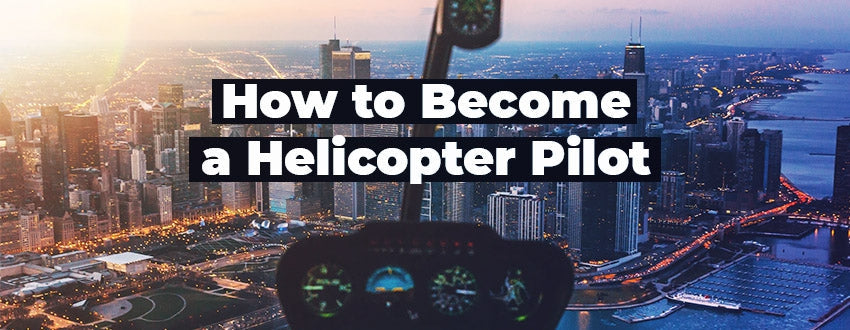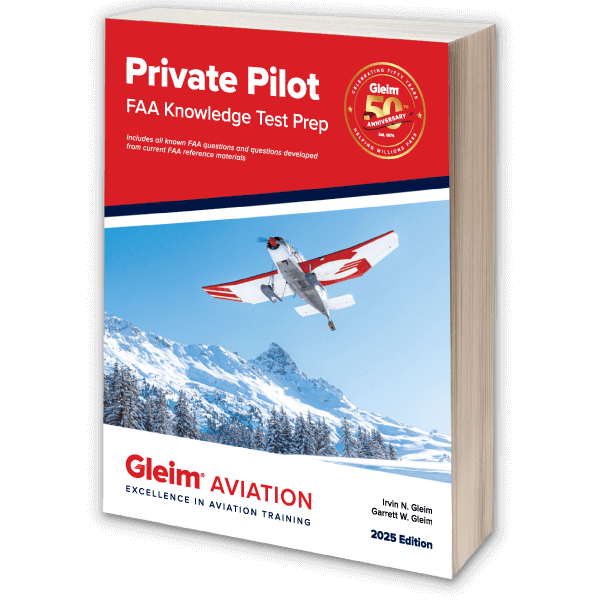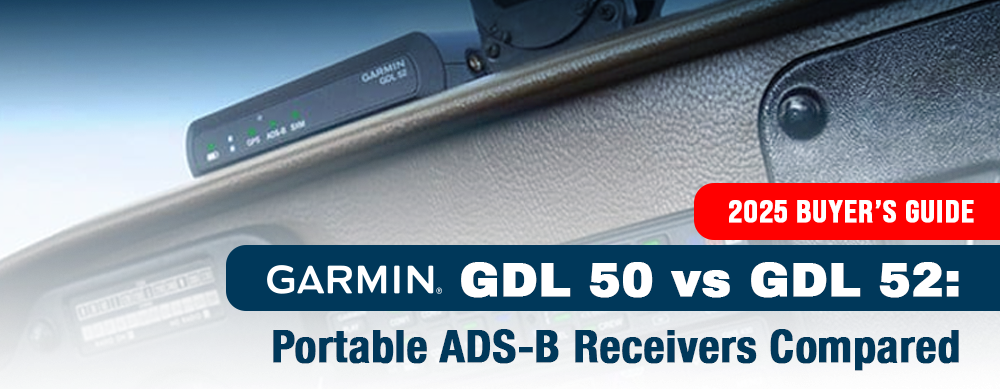Almost everyone looks up when they hear a helicopter flying overhead, right? There’s a certain mystique about flying helicopters and the people who pilot them.
Helicopters are fast, they’re agile and they can get into places that a fixed wing aircraft couldn’t hope to. Helicopter pilots conduct search and rescue operations, they airlift wounded military members out of hot zones, they provide aerial reconnaissance, civilian medical transport and more.
Is this the career for you? Let’s find out.
How much does it cost to get a helicopter pilot’s license?
The total cost for a private helicopter pilot certificate averages between $15,000 and $25,000. Budget an additional $18,000 - $35,000 for your commercial helicopter pilots license.
If one of your career goals includes teaching, you will need to become a certified flight instructor. Factor in another $4,000 - $11,000 for your CFI rating.
When planning your budget, remember that your personal costs will vary depending on where you go for your training, who you train under and how many actual flight hours it takes for you to become a proficient helicopter pilot.

Is it worth becoming a helicopter pilot?
Helicopters are significantly more expensive to fly and maintain than fixed wing aircraft. This explains why many private pilots choose to go the fixed wing rather than the rotor route. Unless you have a substantial budget, flying a helicopter can be a cost prohibitive hobby.
That doesn’t mean that it isn’t worth becoming a helicopter pilot. To negate the high flight costs, many private helicopter pilots simply go on to earn their commercial helicopter pilot certificate.
Making piloting your career means your costs are covered and you get paid to do something you enjoy.
How much does a helicopter pilot make a year?
With a new commercial license and minimal flight time, your best paying starter job will like be as a flight instructor. This is why it makes sense to get your flight instructor rating along with your commercial license.
A mid-range helicopter pilot salary is usually attainable once you’ve logged over 1,000 hours of flight time.
- The average pay for a helicopter flight instructor is around $30,000 a year.
- Tour pilot positions pay around $40,000-$50,000
- Emergency services role, your salary will be closer to $50,000 - $90,000.
- Firefighting helicopter pilots are well-paid seasonal employees earning an average of $75,000 per fire season.
- Finally, score a job as pilot for business executives, VIPs or with an offshore oilrig, and you can make $100,000+.
Is it hard to become a helicopter pilot?
Piloting a helicopter may be challenging, but the process to get there isn’t that hard. All you need to do is follow the steps the FAA has laid out – get the training, learn the skills, log the hours and pass the tests.
Here’s how to get started:
Step-By-Step Guide to Becoming a helicopter pilot
1. Check that you meet the FAA’s minimum eligibility requirements
For a private helicopter pilot certificate, you must:
- Be at least 17 years old
- Be fluent at reading, writing and speaking English
- Be able to provide proof of identity
- Be able to qualify for and obtain a 3rd class FAA medical certificate
For a commercial helicopter pilot license, you must:
- Be at least 18 years old
- Be fluent at reading, writing and speaking English
- Be able to provide proof of identity
- Be able to qualify for and obtain a 2nd class FAA medical certificate
- Have already earned a private helicopter license
2. Get your student pilot and medical certificates
If you don’t already have a pilot’s license and medical certificate, you will need to get both. New pilot students need a student pilot certificate. Follow the step-by-step instructions in our student pilot certificate guide to walk through the process of submitting your application and getting your physical examination.
If you already have a pilot’s license, confirm that it is valid and that your medical is current.
3. Attend ground school & pass your written knowledge test
Before you get up in the air, you will receive ground instruction from your flight instructor. This is when you will be introduced to helicopter systems and operations, emergency procedures, navigation, regulations, chart reading, meteorology and more. The ASA Helicopter Flying Handbook is a useful resource to have for this part of your training.
Once they feel you are ready, your flight instructor will sign you off and you can take your written knowledge test. Pass that test, and you are on to flight training.

4. Complete the FAA required flight time & become proficient
Each pilot certificate has its own set of required flight hours. Remember that the hours listed are minimums, and most students will take more than the minimum to reach proficiency.
Private Helicopter Pilot
- Total required hours: 40
- Training breakdown:
- 20 hours of training with CFI
- 10 hours of solo training including:
- 3 hours cross-country
- A cross-country that is over 100 miles and includes landings at 3 points
- 3 takeoffs and landings from an airport with a control tower
- 3 hours of cross-country training
- 3 hours of night training including:
- A cross-country over 50 miles
- 10 takeoffs and landings
- 3 hours of training must occur within 2 months of taking check ride
Commercial Helicopter Pilot
- Total required hours: 150
- Training breakdown:
- 100 hours in a powered aircraft
- At least 50 of these hours must be in helicopters
- 100 totals hours of pilot-in-command time
- At least 35 of these hours must be in helicopters
- At least 10 of these hours must be on cross-country flights
- 20 hours of training time including:
- 5 hours of IFR
- An over 50-mile daytime cross-country flight lasting at least 2 hours
- An over 50-mile nighttime cross- country flight lasting at least 2 hours
- 3 hours of practical test preparation with your instructor within 2 months of your check ride
- 10 hours of solo flying including:
- A cross-country flight which includes landings at 3 points and has a segment longer than 50 miles
- 5 hours of night flying which includes 10 takeoffs and 10 landings
- 100 hours in a powered aircraft
5. Pass your practical test
Once your instructor signs off, you are ready to take your practical test or check ride. Your instructor will have helped you prepare for both the oral and hands-on portions of this test. Pass your practical flight test, file your paperwork and you’re a pilot.
Frequently Asked Questions
Outside of FAA requirements, here are some frequently asked questions regarding becoming a helicopter pilot that are useful to know the answers to.
1. Where can I get my Helicopter training?
You can check out this list for various locations for Helicopter flight training.
2. What are the typical flight training costs to become a helicopter pilot?
Helicopter flight training costs can vary, but usually run between $15,000-$25,000 for a private pilot license in the United States, but these costs can be different based on location and individual progress.
Also, factor in costs such as taking your FAA written examination, getting your FAA Medical certificate and fees to cover the FAA examiners time.
Advanced training will rack up additional costs such as:
- An additional $16,000-$17,500 Total Cost for your Instrument Rating
- An additional $53,000-$64,000 Total Cost to go from Private to Commercial Pilot Certificate
- An additional $60,000-$68,000 Total Cost to go from Private to Certified Flight Instructor
Check with the flight training facility you intend to train at for accurate and current pricing.
3. Is there a big need for Helicopter pilots?
Yes, according to a report done by Boeing, there is a big need for pilots.
4. What are the career prospects?
Helicopter pilots have many career opportunities including:
- Flight Tours
- Aerial Photography
- Search and Rescue
- Utility Transport
- Law Enforcement
- Firefighting
- Corporate Flying
5. How long does it take to become a Helicopter pilot?
Becoming a professional helicopter pilot is definitely not an easy goal. It requires months, or even years of intense training and study. The path to becoming a professional pilot is long and challenging, but the more time and focus you put into your flight training and ground studies, the quicker you will achieve your goal.
6. What math skills do I need to be a Helicopter pilot?
Basic math skills for tasks such as fuel calculations, weight and balance, flight planning, and navigation are all that a commercial pilot needs to be able to understand.
7. Should I go to flight school or and aviation college?
The choice depends on your individual preferences and career goals.
Want to learn more? Check out the ASA Helicopter Flying Handbook (ASA-8083-21B).
|
|
ASA Helicopter Flying Handbook (ASA-8083-21B) New Edition The Helicopter Flying Handbook is the definitive FAA publication regarding Helicopter-specific subject areas.
|
Check out our other amazing guides!
Did you find this article helpful?
Do you think we covered everything regarding how to become a helicopter pilot? Let us know in the comments below!










